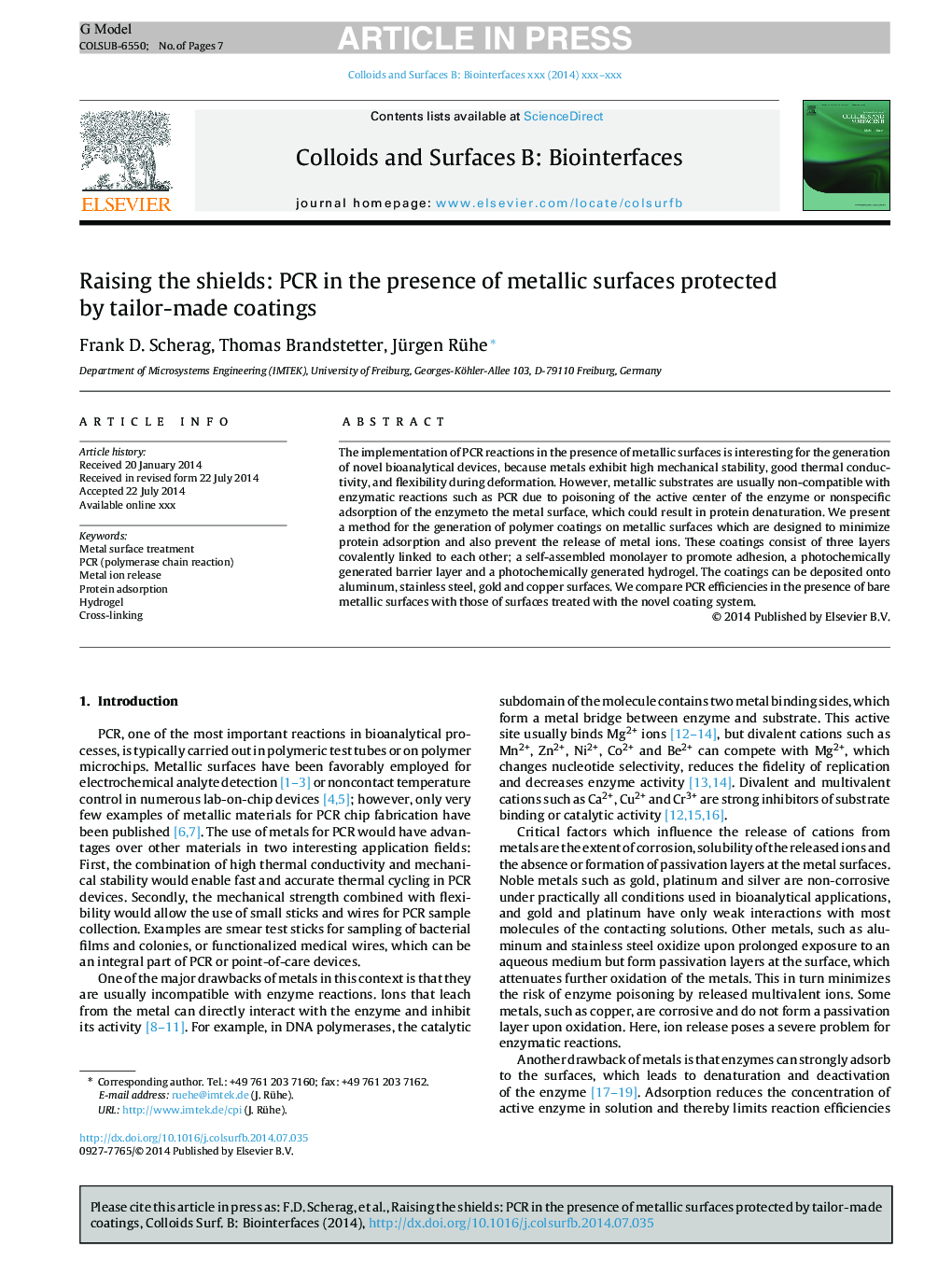| Article ID | Journal | Published Year | Pages | File Type |
|---|---|---|---|---|
| 6982754 | Colloids and Surfaces B: Biointerfaces | 2014 | 7 Pages |
Abstract
The implementation of PCR reactions in the presence of metallic surfaces is interesting for the generation of novel bioanalytical devices, because metals exhibit high mechanical stability, good thermal conductivity, and flexibility during deformation. However, metallic substrates are usually non-compatible with enzymatic reactions such as PCR due to poisoning of the active center of the enzyme or nonspecific adsorption of the enzymeto the metal surface, which could result in protein denaturation. We present a method for the generation of polymer coatings on metallic surfaces which are designed to minimize protein adsorption and also prevent the release of metal ions. These coatings consist of three layers covalently linked to each other; a self-assembled monolayer to promote adhesion, a photochemically generated barrier layer and a photochemically generated hydrogel. The coatings can be deposited onto aluminum, stainless steel, gold and copper surfaces. We compare PCR efficiencies in the presence of bare metallic surfaces with those of surfaces treated with the novel coating system.
Keywords
Related Topics
Physical Sciences and Engineering
Chemical Engineering
Colloid and Surface Chemistry
Authors
Frank D. Scherag, Thomas Brandstetter, Jürgen Rühe,
